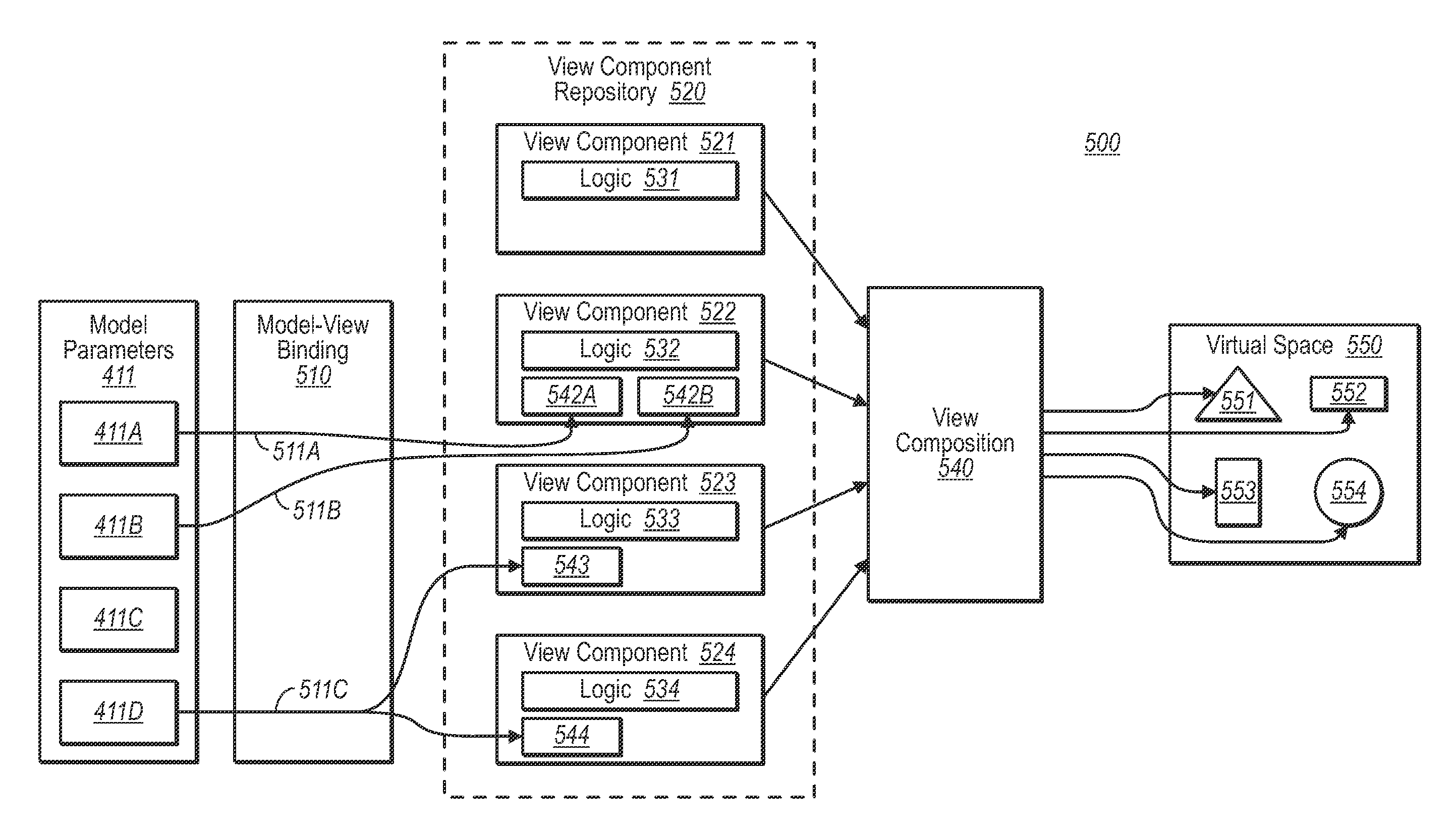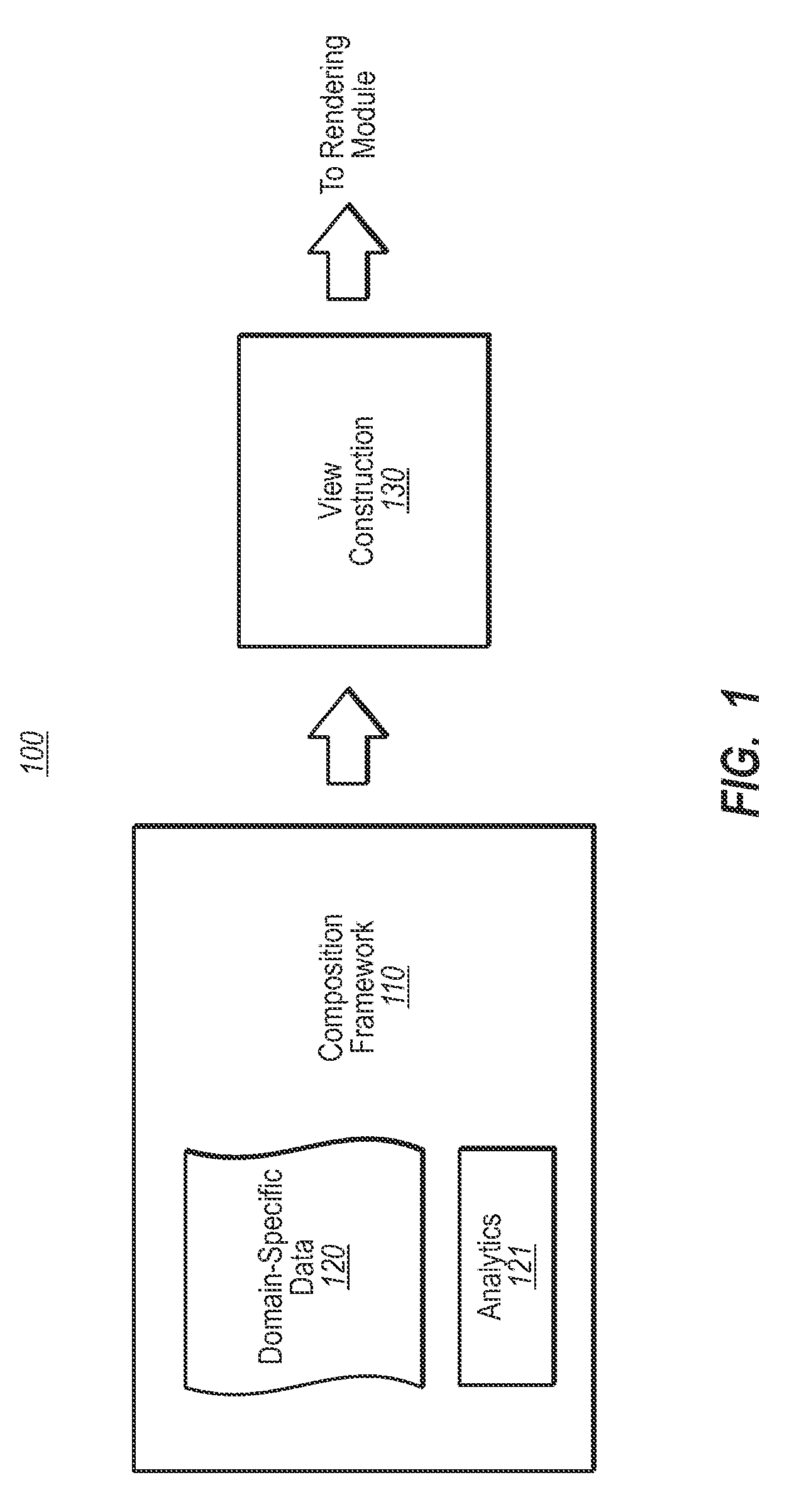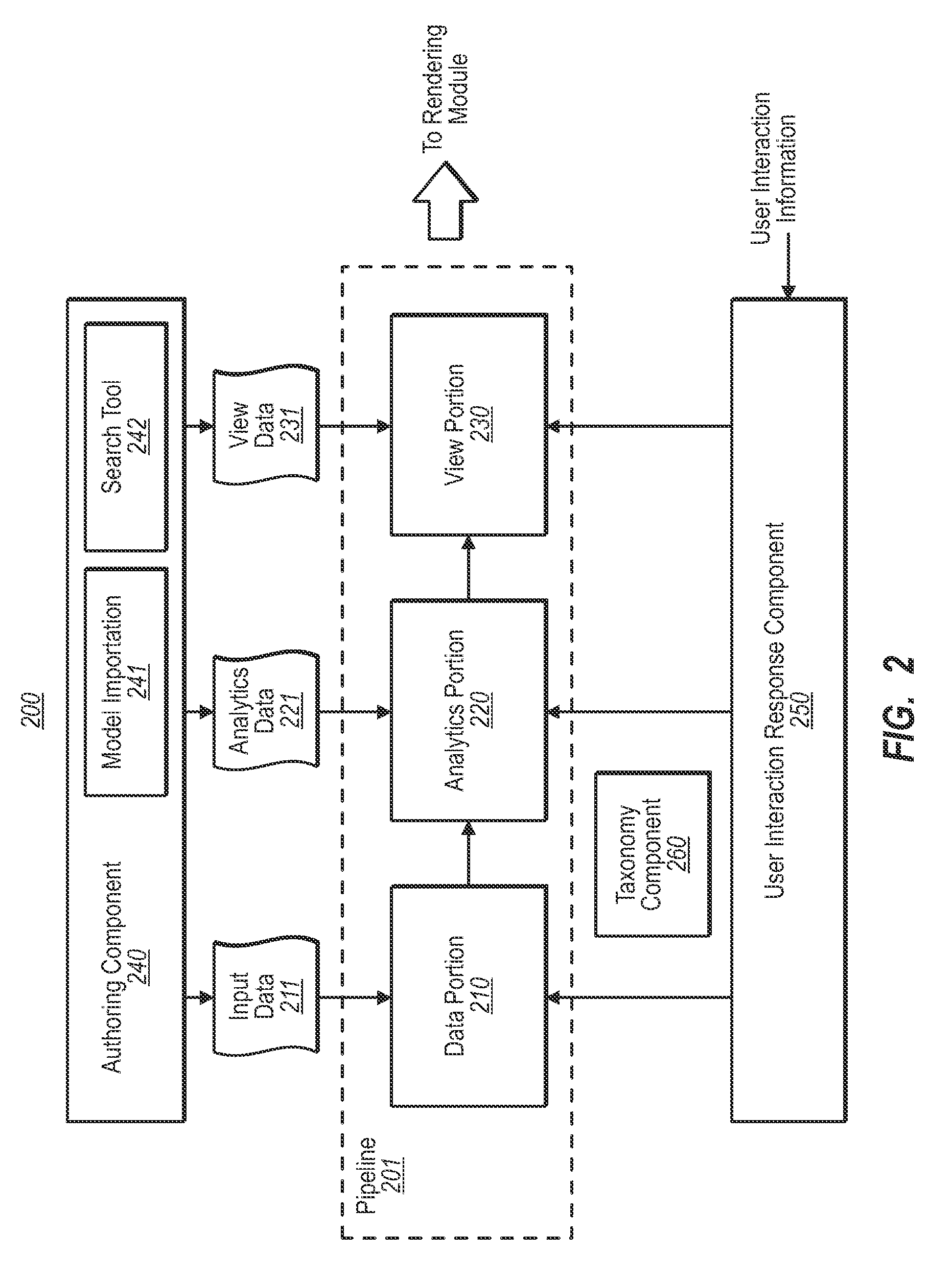Presaging and surfacing interactivity within data visualizations
a data visualization and interactivity technology, applied in the field of data visualization, can solve the problems of limiting the amount of user (other than the actual author of the model) that can manipulate the model, and the application does have limitations on the type of information that can be visually conveyed,
- Summary
- Abstract
- Description
- Claims
- Application Information
AI Technical Summary
Benefits of technology
Problems solved by technology
Method used
Image
Examples
Embodiment Construction
[0052]FIG. 1 illustrates a visual composition environment 100 that uses data-driven analytics and visualization of the analytical results. The environment 100 (also called hereinafter a “pipeline”) includes a composition framework 110 that performs logic that is performed independent of the problem-domain of the view construction 130. For instance, the same composition framework 110 may be used to compose interactive view compositions for city plans, molecular models, grocery shelf layouts, machine performance or assembly analysis, or other domain-specific renderings. As will be described, the analytics may be used to search and explore in various scenarios. First, however, the basic composition framework 110 will be described in detail.
[0053]The composition framework 110 performs analytics 121 using domain-specific data 120 that is taxonomically organized in a domain-specific way to construct the actual view construction 130 (also called herein a “view composition”) that is specifi...
PUM
 Login to View More
Login to View More Abstract
Description
Claims
Application Information
 Login to View More
Login to View More - R&D
- Intellectual Property
- Life Sciences
- Materials
- Tech Scout
- Unparalleled Data Quality
- Higher Quality Content
- 60% Fewer Hallucinations
Browse by: Latest US Patents, China's latest patents, Technical Efficacy Thesaurus, Application Domain, Technology Topic, Popular Technical Reports.
© 2025 PatSnap. All rights reserved.Legal|Privacy policy|Modern Slavery Act Transparency Statement|Sitemap|About US| Contact US: help@patsnap.com



